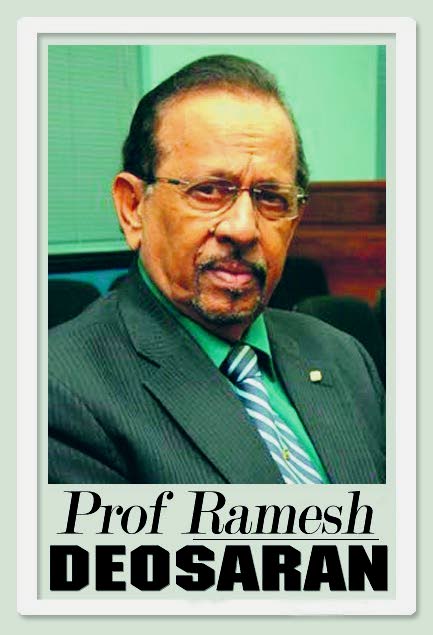African youth in danger

Danger. This is described as “exposure to harm; a thing that causes or is likely to cause harm.” Last Sunday at the Diplomatic Centre Emancipation celebrations, the Prime Minister said, “the African population here is not doing well as expected,” and more precisely “it was a problem in the African community where the African youth by their tens of thousands was going astray and choosing crime and violence as a way of life.”
Laventille West MP Fitzgerald Hinds called Dr Rowley’s firecracker speech “courageous.”
I agree. It raises the politics of relative deprivation. But what now?
There is danger, whether caused by “family breakdown,” education system, class discrimination or lack of positive aspirations. Not a new problem. In fact, while Dr Rowley hits “family breakdown,” he kindly failed to mention the education system, where the crisis is largely hatched, recycling inequity. Such social problems, especially those tied to ethnicity, get deeply rooted over time by institutional neglect and political denials, such that whosoever independently dares to warn of the dangers quickly becomes accused of “mischief” and having “an agenda.”
Magic will not heal or close the gaps. Rather than looking for the silver bullet, tackling the "African youth problem” will require at least a credible five- to seven-year rolling plan.
Rowley’s “better-late-than-never” speech inspired me to reflect on 2006, when the Public Services Association (PSA) president Jennifer Baptiste-Primus collaborated with me on a preliminary “Save the African youth” project prioritised along the East-West Corridor. (From 1,120 Form 5 students, high-achieving vs high-risk secondary schools) The 80-page final report, with 14 recommendations, was entitled African Youths in Danger on the East-West Corridor. The PSA dutifully submitted the report in 2006 to the Ministry of Education.
No need to tell you what happened.
A major research finding was the psychological deficiency of those African youths in the low-achieving (academic) government secondary schools as compared to similar students in the high-achieving (prestige) school. Our focus group sessions and questionnaires found that these lower-class African boys in the low-achieving schools were innately bright, of high thinking ability, but of low academic and occupational aspirations – potentially successful in deviant options.
Having high ability alone seems not enough. There must also be high academic self-concept and positive aspirations too.
Using culture-fair scales, I found this to be clearly so as a researcher working at the Toronto Board of Education. In fact, I published several research papers widely used by other school boards (see for instance: Social class and educational expectations: a social psychological analysis, Canadian Journal of Behavioural Science. Post-secondary options: individual freedom or social injustice? Canadian Journal of International Education: Interchange.)
Our 2006 PSA report concluded: “The mental distress, anger and career uncertainties of these EW Corridor African males became much clearer when we interviewed their counterparts from the "prestige school.” These prestige-school boys had very clear vision of what they wanted to become and which institutions offered their chosen professions, what subjects to take, etc. They spoke of “professions,” not “jobs," as their counterparts stated.
It was not their race, but more likely the mental state they socially acquired and the aggravating condition of their low-achieving school. The self-fulfilling prophesy prospered. With the seven career-development criteria used (such as career specificity), African students from low-achieving schools scored a low average of 2.1 compared to 4.6 by the African boys from the “prestige” school.
Through lack of role models and a depressing environment these youths appeared career-blind. Gypsy says the “black boy crisis” is now “worse.” While we may not be able to quickly change their socio-economic environment, with inspiring teachers and self-empowerment many can cross the hurdles. Show them they can make it if they try. (Stalin)
To help heal the mental gaps, a notable 2006 recommendation was the quick establishment of career empowerment centres (CEC) strategically located along the East-West Corridor and functionally connected to the affected schools. This in civic partnership with the government, labour and private sectors. Briefly, while the CECs will help provide mental empowerment, they will help provide post-secondary occupational opportunities too.
Of course, we can talk passionately, like Dr Rowley, about the “African youth problem,” but healing will require some hard work, sustainable planning and implementation. Otherwise the dangers of crime and violence will likely increase.


Comments
"African youth in danger"